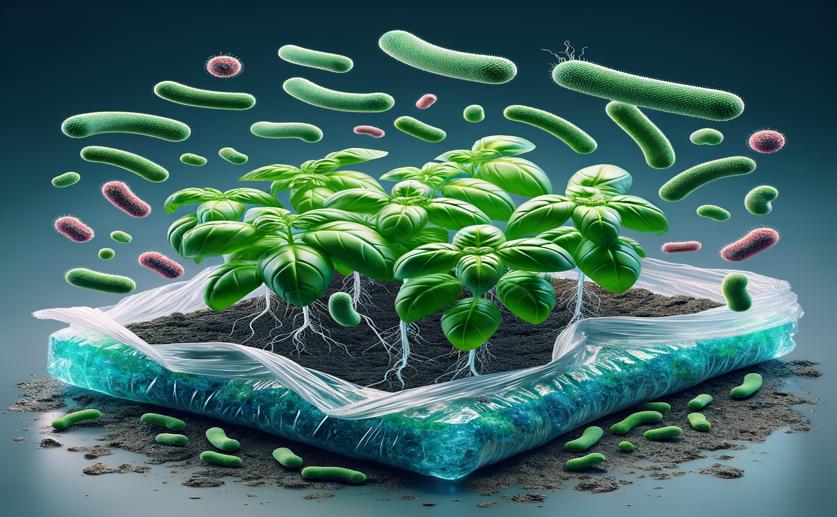
Bacteria Can Transfer from Plastic Mulch to Basil and Spinach Salad Leaves
Jim Crocker
31st May, 2024

Image Source: Natural Science News, 2024
Key Findings
- The University of Stirling study found that human pathogens can transfer from plastic mulch fragments to ready-to-eat crops like basil and spinach within 24 hours
- Pathogens such as Salmonella Typhimurium and Vibrio cholerae can persist on plastic mulch fragments for up to 14 days
- The study highlights that removing plastic fragments and washing crops may not be enough to eliminate these pathogens, stressing the need for better management practices in agriculture
References
Main Study
1) Salmonella Typhimurium and Vibrio cholerae can be transferred from plastic mulch to basil and spinach salad leaves.
Published 30th May, 2024
https://doi.org/10.1016/j.heliyon.2024.e31343
Related Studies
2) Sources and contamination routes of microbial pathogens to fresh produce during field cultivation: A review.
3) The long-term uncertainty of biodegradable mulch film residues and associated microplastics pollution on plant-soil health.
4) Degradation of microplastic seed film-coating fragments in soil.
5) Occurrence of microplastic in livestock and poultry manure in South China.



 29th May, 2024 | Jim Crocker
29th May, 2024 | Jim Crocker